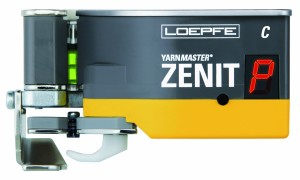
In spinning, second-quality or contaminated yarns must be eliminated. One main obstacle for top quality yarn is the increasing amount of foreign matter and particles in cotton.
Contamination, even if it is a single foreign fibre, can lead to the downgrading of yarn, fabric or garments to second quality or even the total rejection of an entire consignment and is thus a very important parameter in the yarn trade.
The International Textile Manufacturers Federation (ITMF) conducts surveys on cotton contamination at regular intervals. It’s surprising to note that despite sustained efforts made by ginners and producers, the cotton produced is mostly contaminated.
Foreign matter in raw cotton typically consists of plant leaves, sticks, stems, seed-coat fragments, shale and grass, paper, textiles, jute as well as foils, fabrics and ropes from bale packaging materials from different plastics. The nature and extent of foreign matter contamination are strongly dependent on the origin of cotton. Even machine harvested cotton contains 13-35 per cent foreign matter.
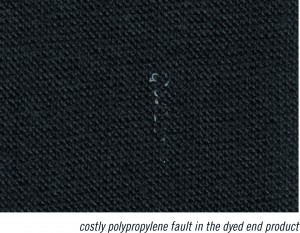
There is no doubt that the continued and increasing presence of foreign matter in raw cotton is a serious issue for spinning mills all around the world, regardless of which cotton qualities used for the spinning process.
Quality conscious spinning mills have 100 per cent of their processed cotton checked in the blow room line by the various available cotton sorter machines in combination with special PP detection options. In many mills in Asia, these cotton sorter machines are supported by preliminary manual sorting.
Experience shows that foreign matter elimination in the blow room line reduces the cutting count in the winding process by only 10 per cent.
Removal systems in the blow room line focus on the bulk of the contamination. Such systems have not been designed to detect and remove small particles. The removal of such parts is the task of yarn clearers.
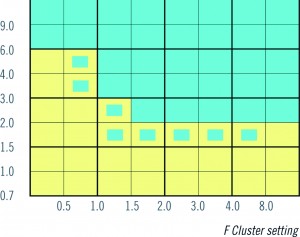
In a typical winding room today, the number of cuts per 100 km initiated by the yarn clearer with foreign fibre sensors is increasing due to the growing quality demand by yarn buyers and to the everlasting and increasing contamination level in cotton.
It is generally said that a yarn clearer with a vegetable filter is giving spinning mills greater productivity with yarn quality maintenance. It is also believed that vegetable foreign matters in cotton yarn disappear in the bleaching process and therefore do not need to be removed by the yarn clearer. However, spinners are left to believe that yarn clearer settings differentiating between organic and non-organic foreign matter reduce the number of cuts and at the same time will not affect the fabric quality.
Such views are just wishful thinking. Studies carried out by experts from the dyeing and finishing sector confirm that the various dying and bleaching processes do not guarantee that all coloured fibres as well as seed fragments and other vegetable parts of the cotton plant left in the yarn will be removed. On the contrary, vegetable parts or other coloured foreign fibres are burnt during the bleaching process, and as a consequence a weak point in the yarn is generated.
Cottonseed fragments, stalks and leaves and pieces thereof might change their appearance into white, but remain in the yarn. If a yarn with such bleached vegetable inclusions will undergo the dyeing process, those left vegetable points will turn into white spots as the dyestuff absorption is different and subsequently appear as spots in the fabric. Only a mercerizing process would completely get rid of such vegetable inclusions.
This finishing process is however quite expensive and only justified for top level yarn qualities. However, the effect of mercerization on the vegetable inclusions left in the yarn is in changing the yarn structure and ultimately weakening the yarn.
Therefore Loepfe does not see any practical use of the propagated vegetable filter in a yarn clearer for quality-minded spinning mills.
Loepfe, the market leader
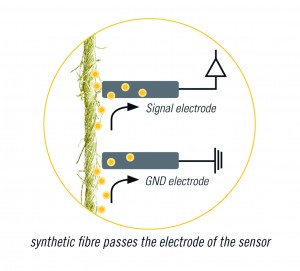
With YarnMaster Zenit FP yarn clearers of the latest generation, disturbing foreign matters are well detected and cleared in raw-white, dyed as well as mélange staple yarns. This means clearing foreign matter dark/light at the same time!
Sometimes, certain foreign matter faults may remain in the yarn and need not to be cut. However, if the number of such faults in a certain length appear very frequently, we talk about a cluster. In such cases, the defect frequency is an additional parameter!
For this purpose an additional clearing tool is used, the F Cluster channel. Above the first limit every defect is cut out. Above the additional limit defects are only temporarily counted. If these exceed a certain frequency, then the spindle is blocked and the faulty bobbins removed.
The observation length can be chosen from 0.1 m to 80 m and the maximum fault numbers relative to the set observation length can be set as per market requirements. This powerful tool is a true foreign matter filter.
Foreign matter and foreign fibres must be divided into two completely different groups. Foreign matter are parts that differ significantly from cotton through their colour, contrast and structure. Foreign fibre comprises of light and transparent objects. These foreign parts, which are usually polypropylene (PP), hardly differ in colour from the cotton and are invisible for any optical foreign fibre sensor.
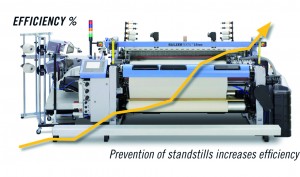
The only reliable and industrially proven method of eliminating white PP in cotton yarns is the Tribo-electric yarn clearing technology, just and exclusively available with Loepfe Zenit yarn clearers.
The Tribo-electric effect is a type of contact electrification in which certain materials become electrically charged after they come into contact with another different material and are then separated.
Materials are often listed in order of the polarity of charge separation when they are touched with another object. A material towards the bottom of the series, when touched to a material near the top of the series, will attain a more negative charge, and vice versa. The further away two materials are from each other on the series, the greater the charge transferred.
Even in blended cotton yarns, white PP faults are detected with the Tribo-electric sensor!
When the Tribo-electric measuring principle is used, variable amplifiers adjust the signal to a normalized level. While the yarn passes the sensor, the fibres exchange electrons with the sensor.
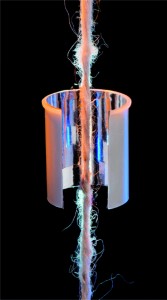
This effect is referred to as the “Tribo-electric effect”. It is continuously measured by state-of-the art electronics. When a synthetic fibre passes the electrode of the sensor, it is detected because of the Tribo-electric voltage difference.
The Yarn Master ZENIT FP yarn clearer thus detects synthetic foreign fibre matter, such as polypropylene, polyethylene, polyamide (nylon), etc.
Experience shows that every fifth machine stop during sectional warping and beam warping is caused by PP contamination. Yarn strength is essentially reduced because there are fewer fibres in the cross-section which causes yarn breaks in further processing. In addition, hooking can also cause machine standstills. The later the standstills occur in the process, the higher the costs thereby incurred. For example, raw-white PP becomes visible only after dyeing. Clearing this foreign matter improves the yarn standard considerably and prevents costly complaints concerning the dyed end product.
And most importantly, the door to the most demanding market is opened. Nowadays, garment purchasing houses from Europe are extremely demanding. In many cases, it becomes necessary that only “PP controlled yarn” is being used and asked by the knitters and weavers for satisfying such ever increasing high demands. Needless to mention that higher margins can be achieved for such yarn as well!
A complete yarn clearing system
Loepfe is the pioneer and worldwide leader for optical yarn clearers:
• Still and forever not affected by humidity, climatic changes nor the material properties!
• Still true to the fact that quality assessment of textile surfaces is always a visual process!
• Over 55 years of know-how and dedication in this field give secureness and flexibility
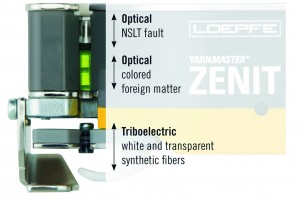
The unique “all-around view” ensures the complete evaluation of the yarn structure. The optical and tribo-electric measuring methods have proven themselves for many years for all yarn qualities, yarn count ranges and fibre materials and are optimal solutions.
The YarnMaster Zenit yarn clearer is very flexible with respect to yarn types and material and covers the complete yarn count range with only one sensing head and thus giving Loepfe customers lasting investment-protection.
Any material processed is running through an optimized and unrestricted yarn path while passing through the unique 3 sensor technology backed Zenit FP yarn clearer, resulting in very few abrasive effects on the yarn even at highest winding speeds.
The 7-segment display which is built into the sensing head provides valuable information and status report already at the production spindle which allows for faster intervention and cost savings!
The operational reliability of the tried and tested Zenit C FP2 yarn clearers of the latest generation is documented with record sales numbers achieved over the past few years.